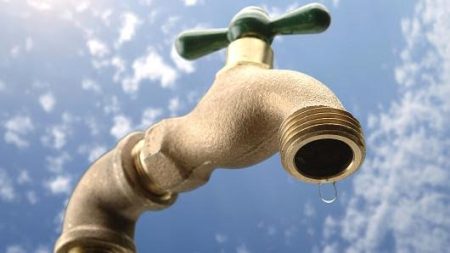January 28, 2018 – The people of Cape Town, South Africa, have been told to prepare for “Day Zero” when the city runs out of water from the tap for drinking and bathing. They have marked their calendars for April 12th when reservoirs will have become so depleted there will be no tap water.
Why has this happened?
The southern tip of Africa has dramatic seasonal precipitation variance. Winters tend to be low rainfall periods while summers are wetter. At least that’s the historic weather pattern. But for the last three years, winter rains have been scarce leading to a crisis at the city’s main sources of water.
On “Day Zero” the capacity of the remaining reservoirs will drop to 13.5%. That’s when water to non-essential services will no longer flow. Hospitals and schools will still get water. But everyone else will line up at 200 communal taps where they will be allowed 25 liters per day.
The city government has urged its 4 million residents to reduce water usage throughout the three-year drought but large numbers have ignored the plea. And now the city faces a dilemma that other cities in areas of marginal precipitation may face in the near future.
This is not the first time a large city has seen its taps run dry. Back in 2015, the largest city in the Western hemisphere faced water shutoffs. Sao Paulo, Brazil, experienced a two-year drought, the worst in 80 years, that drained the Cantareira reservoirs responsible for supplying water to 9 million of its 20 million inhabitants. In high rise apartments across large blocks of the city, taps ran dry for 12 hours per day. It was strange that this could happen in Brazil, a country containing 16% of all the freshwater on the planet. But Sao Paulo was far from the major source of that water, the Amazon River basin. What caused Sao Paulo’s water shortage? Scientists blamed deforestation of the Amazon basin as the greatest contributing factor, changing patterns of precipitation in the southern part of the country. What ended the drought for Sao Paulo was the arrival of an El Nino climate event in the Pacific Ocean which altered precipitation patterns over the region.
An El Nino cannot save Cape Town. Facing the worst drought in over a century, the Pacific Ocean phenomenon doesn’t impact South Africa the way it does Brazil. Cape Town is experiencing a regional climate change which some scientists argue has anthropogenic causes leading to a shift to a drier Southern Africa. Their analysis shows over the last 84 years a trend to decreasing rainfall in the region with the rate of decline around 17 millimeters per decade.
The government of Cape Town has plans for a long-term solution. It is looking at building desalination plants, developing a grey-water reuse infrastructure, and implementing groundwater conservation policies to make its water supply more resilient and avoid a future “Day Zero.”
Cape Town in April will join over 2 billion people on this planet that lack access to readily available tap water in their homes. But things are even worse in other parts of Africa where according to the World Health Organization in 2017, over 250 million have to travel at least 30 minutes daily to find clean water.










